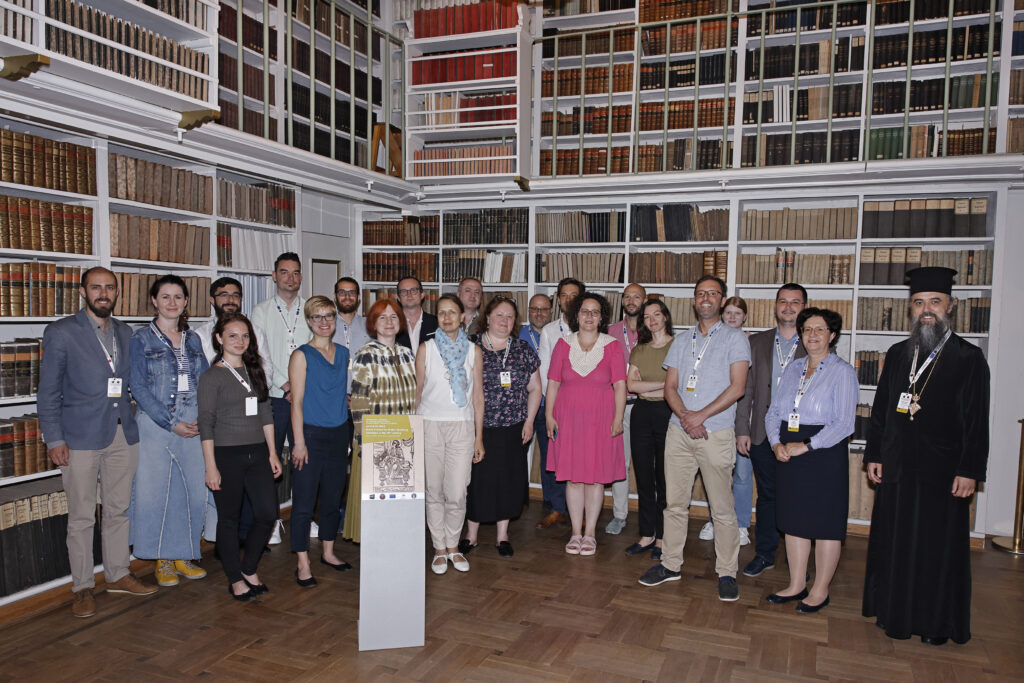International Conference on Early Arabic Printing
Report
From 22 to 23 June 2023, the ERC project TYPARABIC convened its second international conference at the Gotha Research Library, entitled “Spread the Word. Books Printed for Arabic-Speaking Christians in the 18th Century.” Participants explored historical, cultural, literary, material, and artistic dimensions of printing in Arabic in the early modern period. The Gotha Research Library preserves the largest collection of such printed works worldwide because of the book acquisitions made by the natural scholar and traveler Ulrich Jasper Seetzen (1767–1811) on behalf of Duke Ernest II (1745–1804) and his son August of Saxony-Gotha-Altenburg (1772–1822).
Since 2020, members of the ERC project Early Arabic Printing for the Arab Christians. Cultural Transfers between Eastern Europe and the Ottoman Near-East in the 18th Century (TYPARABIC), directed by Prof. Ioana Feodorov (Institute for South-East European Studies, Romanian Academy), have been researching the context and outcomes of printing liturgical, patristic, polemical, and other works in Arabic in the Arab provinces of the Ottoman Empire. These works were printed by and for Arabic-speaking Christians. The second conference of the TYPARABIC project, which was convened at the Gotha Research Library on 22 and 23 June 2023, was dedicated to issues like book collections which included printed works, protagonists and architects of printing, and visual art and aesthetic influences reflected in printed books.

Fig. 1: Participants in the second conference of the ERC TYPARABIC Project, “Spread the Word. Books Printed for Arabic-Speaking Christians in the 18th Century”, Gotha Research Library.

Fig. 2: First page of a work in Arabic, authored and printed by the Melkite intellectual ʿAbdallāh Zākhir in 1764 at the Monastery of al-Shuwayr. The title of the work is al-Burhān al-ṣarīḥ fī ḥaqīqat sirray dīn al-masīḥ, a treatise on the mysteries of Christ (Theol 8° 00715/13, p. 1).
Because of the relatively small number of books printed in Arabic in the 18th century, compared to the number of manuscripts copied during this period, such printed works have garnered little scholarly attention and remain insufficiently researched—the ERC project conducts pioneering research in this regard. Since the Gotha Research Library preserves the largest collection of early printed works in Arabic worldwide, project members and invited participants were looking forward to a productive cooperation in the framework of the conference.
In their papers, ERC project members and international participants addressed questions like the following: How were printed works perceived during the 18th century, by whom were they collected and for what reasons? Which collections preserve printed books today, from Georgia to Lebanon, and what are the works that they include? What can we learn from ownership statements, reader’s notes, and other secondary statements about the provenance of the printed books, and their circulation? What was the visual repertoire of printed books and how does it relate to different art forms and cultural and artistic contexts?
A particular highlight on the first day of the conference was a hands-on session during which participants in the conference had the opportunity to look at a number of early printed works in Arabic, Karshuni (Arabic written in Syriac letters), and Armenian, which are preserved at the Gotha Research Library. The books that the participants studied together included Gospels, Psalters, song books, theological works, religious guides for Catholics, and other spiritual works.

Fig. 3: Hands-on session during day 1: participants in the conference “Spread the Word” are having a look at an early printed book in the Gotha Research Library.
The program of the workshop can be found here:
https://www.uni-erfurt.de/fileadmin/Bilddatenbank/Veranstaltungen/Poster_Flyer/230622_spread_the_word_Programme.pdf
The workshop proceedings will appear in De Gruyter’s series “Early Arabic Printing in the East”, in which the results of the TYPARABIC project are published. Further information on the publications of the project in the series is available here:
https://www.degruyter.com/serial/eape-b/html
Feras Krimsti
Feras Krimsti is historian of the early modern Middle East and the curator of the oriental manuscripts preserved at the Gotha Research Library.